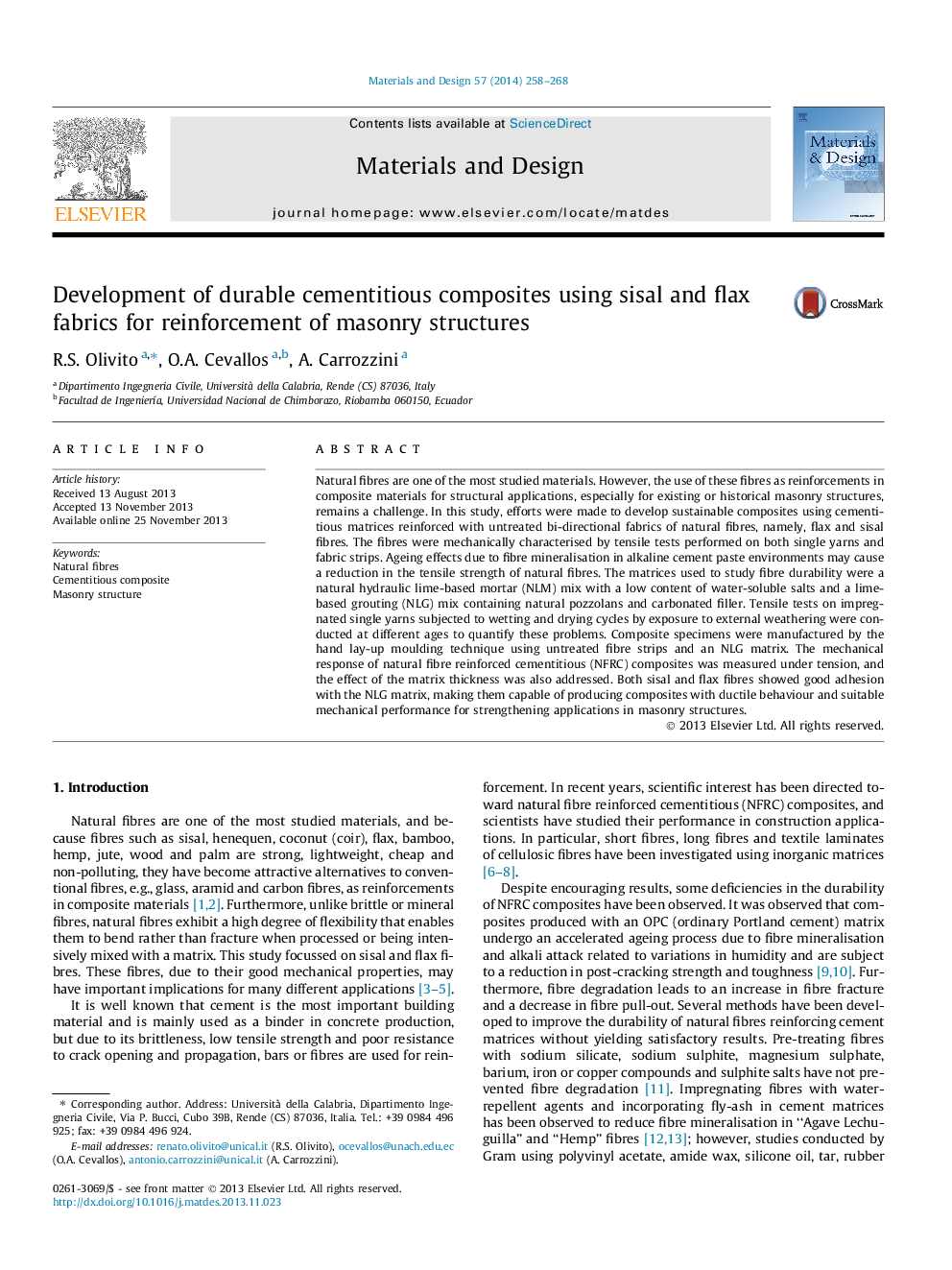| Article ID | Journal | Published Year | Pages | File Type |
|---|---|---|---|---|
| 829343 | Materials & Design (1980-2015) | 2014 | 11 Pages |
•Natural fibres reinforced cementitious composites were studied.•Flax and sisal bi-directional fabrics were used in the composites preparation.•Ageing effects were quantified by tensile tests conducted on fibre yarns impregnated with two different cementitious matrices.•The fiber tensile strength does not decrease after three months by using an NLG matrix.•The mechanical performance of the composite samples was evaluated by direct tensile test.
Natural fibres are one of the most studied materials. However, the use of these fibres as reinforcements in composite materials for structural applications, especially for existing or historical masonry structures, remains a challenge. In this study, efforts were made to develop sustainable composites using cementitious matrices reinforced with untreated bi-directional fabrics of natural fibres, namely, flax and sisal fibres. The fibres were mechanically characterised by tensile tests performed on both single yarns and fabric strips. Ageing effects due to fibre mineralisation in alkaline cement paste environments may cause a reduction in the tensile strength of natural fibres. The matrices used to study fibre durability were a natural hydraulic lime-based mortar (NLM) mix with a low content of water-soluble salts and a lime-based grouting (NLG) mix containing natural pozzolans and carbonated filler. Tensile tests on impregnated single yarns subjected to wetting and drying cycles by exposure to external weathering were conducted at different ages to quantify these problems. Composite specimens were manufactured by the hand lay-up moulding technique using untreated fibre strips and an NLG matrix. The mechanical response of natural fibre reinforced cementitious (NFRC) composites was measured under tension, and the effect of the matrix thickness was also addressed. Both sisal and flax fibres showed good adhesion with the NLG matrix, making them capable of producing composites with ductile behaviour and suitable mechanical performance for strengthening applications in masonry structures.
